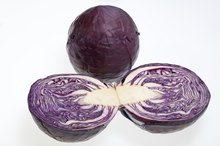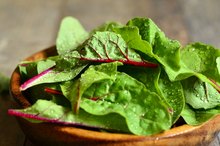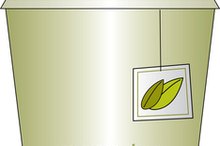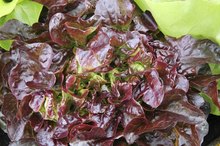List of Foods Containing Phytochemicals
Phytochemicals are plant compounds capable of carrying out biological or biochemical activity within the body when consumed. Phytochemicals are not as widely known as macronutrients, such as protein and carbohydrates, or micronutrients, such as vitamins and minerals. Nonetheless, they may contribute just as much to optimal human health as these other vital nutrients do. More than 1,000 phytochemicals have been discovered, and scientists believe that there may be many still to be found. Processing destroys many phytochemicals, so it is best to consume whole foods to take advantage of these compounds.
Berries
Blueberries, raspberries and other red, blue and purple berries contain anthocyanidin, part of a class of phytochemicals called flavonoids. Anthocyanidin gives berries their color and may help protect the body against cancer, neurodegenerative disease and other chronic diseases. Berries also contain other flavonoids, such as proanthocyanidin and flavonols.
Citrus
Foods That Act Like Estrogen
Learn More
Citrus fruits, including oranges, grapefruit, lemons and limes, contain a type of phytochemical called limonene, which gives a distinct smell to these fruits. Coumarins are another phytochemical component of citrus fruits that can act as a natural blood thinner.
Orange Vegetables
Orange vegetables such as carrots, sweet potatoes and winter squash contain a group of phytochemicals called carotenoids. These carotenoids are typically pigmented bright orange or yellow and include the compounds beta-carotene, alpha-carotene, lutein, zeaxanthin and beta-cryptoxanthin. Carotenoids may help maintain eye health and protect the cardiovascular system, according to the Linus Pauling Institute at Oregon State University.
Tomatoes
List of Blue Vegetables
Learn More
Tomatoes contain lycopene, a powerful antioxidant phytochemical with a bright red color. Lycopene may have benefits ranging from reducing cancer risk to slowing atherosclerosis. Other phytochemical components in tomatoes that probably work in synergy with lycopene include phytoene and phytofluene.
Soy
Soy contains a class of phytochemicals called isoflavones which may have a protective effect against hormone-dependent cancers such as breast cancer, according to BreastCancer.org, although the evidence remains inconclusive so far. Some specific isoflavones include genistein and diadzein. Other phytochemicals in soy include the cholesterol-regulating phytosterols and saponins and the antioxidant phenolic acids and phytates.
Whole Grains
The ferulic acid, caffeic acid and ellagic acid in whole grains have antioxidant properties. These phytochemicals may add to the cancer-fighting properties of fiber and micronutrients also in whole grains.
Red Grapes
Red grapes have a phytochemical called resveratrol that has been implicated in cardiovascular protection. Processing red grapes into other products can affect its phytochemical composition. Resveratrol is at its highest in red wine, but dark red grape juice also contains some of this compound. Red grapes also contain anthocyanidin.
Onions and Garlic
Onions and garlic both have sulfur-containing compounds called sulfoxides, thiosulfinates and diithins, which confer their characteristic strong smell and taste. These sulfur-containing phytochemicals act on the cardiovascular and immune systems as well as having antioxidant properties. The flavonoids quercetin and anthocyanin are also present in onions.
Tea
Tea contains catechins, a powerful group of antioxidant phytochemicals. Catechins impart a slightly bitter taste and tawny color to teas and include the specific compounds epicatechin, epicatechin gallate and epigallocatechin gallate. Catechins may help lower the risk of cardiovascular disease and stroke, support gastrointestinal health and aid the repair of DNA within cells, according to World's Healthiest Foods.
Related Articles
References
Writer Bio
Bridget Coila specializes in health, nutrition, pregnancy, pet and parenting topics. Her articles have appeared in Oxygen, American Fitness and on various websites. Coila has a Bachelor of Science in cell and molecular biology from the University of Cincinnati and more than 10 years of medical research experience.









